Social Sciences > QUESTIONS & ANSWERS > HDFS test bank Exam 1 Chapters 1-7, Questions and answers, 100% Accurate, graded A+ (All)
HDFS test bank Exam 1 Chapters 1-7, Questions and answers, 100% Accurate, graded A+
Document Content and Description Below
HDFS test bank Exam 1 Chapters 1-7, Questions and answers, 100% Accurate, graded A+ __________ seeks to understand how and why people of all ages and circumstances change or remain the same ove... r time. - ✔✔-The Science of Human Development Quantitative data is _____ - ✔✔-numbers Qualitative data is______ - ✔✔-descriptive and describes phenomenon which can be observed but not measured, i.e language quantitative examples of human development - ✔✔-the number of leaves on a tree, age in years, at what age in months an infant first speaks qualitative examples of human development - ✔✔-the type of tree, age in stage of development, what the infants first words were Growth can be defined by what 5 things: - ✔✔-multidirectional, multicontextual, multicultural, plastic, multidisciplinary How do we know anything about human development? - ✔✔-Research and Theory _________ is a way to answer questions using empirical research and data-based conclusions. - ✔✔- Scientific Method Steps of the Scientific Method (1) - ✔✔-Begin with curiosity. On the basis of theory, prior research, or a personal observation, pose a question. Steps of the Scientific Method (2) - ✔✔-Develop a hypothesis. Shape the question into a hypothesis, a specific prediction to be examined. Steps of the Scientific Method (3) - ✔✔-Test the hypothesis. Design and conduct research to gather empirical evidence (data). Steps of the Scientific Method (4) - ✔✔-Analyze the evidence gathered in the research. Conclude whether the hypothesis is supported or not. Steps of the Scientific Method (5) - ✔✔-Report the results. Share the data, conclusions, and alternative explanations. Before the Scientific Community can accept conclusions a sixth and crucial step of the scientific is needed called:____________ - ✔✔-replication Replication is the _________ of a study, using different participants. - ✔✔-repetition A _______ is a specific prediction that can be tested. - ✔✔-hypothesis _________ evidence is evidence that is based on observation, experience, or experiment; not theoretical. - ✔✔-empirical _______ is the influence of the genes that people inherit. General terms for the traits, capacities, and limitations that each individual inherits genetically from his or her parents at the moment of conception. - ✔✔-Nature ______ is the environmental influences that affect development after an individual is conceived, beginning with the health and diet of the embryo's mother and continuing lifelong, including experiences in the family, school, community, and nation. - ✔✔-Nurture nature and nurture are _________. Nature always affects nurture and then nurture affects nature. - ✔✔-bidirectional Most developmentalists accept that nature and nurture interact in ________ ways. Exposure to environments is not always random (peer group) and genes interact with environmental exposure. - ✔✔-complex _________ is the study of many ways environment alters genetic expression, beginning with methylation at conception and continuing lifelong. - ✔✔-Epigenetics epigenetics is a kind of gene-environment interaction where the _________ acts as a "template". Environmental factors can determine whether or not a gene is activated and by how much. While gene expression can change DNA does NOT. - ✔✔-genotype The human _______ refers to the ecosystem of microorganisms that live in and on our bodies. These little bugs- bacteria, fungi, parasites, viruses, protozoans. Refers to the genetic material of microbes in our body. The number of genes in all the microbes in one person's microbiome is 200 times the number of genes in the human genome. Each microbe has 3 million genes. They influence immunity, weight, diseases, mood. The "gut" as a second brain-importance of nutrition. - ✔✔-microbiome ____________ is when genetic risk is activated in both the worst and best environments (dandelions and orchids example). That sensitivity to any particular experience differs from one person to another because of the particular genes each person has inherited, or what happened to that person years earlier. The idea that people vary in how sensitive they are to particular experiences. Often such differences are genetic, which makes some people affected "for better or for worse" by life events. - ✔✔-Differential Susceptibility _______ : genetic risk is activated in adverse environments (stress and substance use disorder). Has been the predominant view of many mental health outcomes. Some people who have a predisposition to a mental illness dont actually develop the mental illness they are supposed to. Some people experience situations in life that increase likelihood that they will develop the mental illness. - ✔✔- diathesis stress all of these types of gene-environment interactions indicate that ________ are important to consider when evaluating the impact of environmental adversity. - ✔✔-individual differences the importance of individual differences: characteristics that vary from person to person such as ___________. - ✔✔-personality trait or genotype Variation in individual differences may explain why one person who experienced severe abuse went on to become resilient compared to someone who did not via __________ processes. - ✔✔-gene x environmental Rachel has had many hardships in life, but she has managed to thrive and be successful. Alternatively, Jen has experienced a few small bumps in the road, and she is seriously struggling as a result. These differences can be attributed to - ✔✔-individual differences the __________ is the approach to the study of human development that takes into account all phases of life not just childhood or adulthood. - ✔✔-Life-span Perspective According to the lifespan perspective development is viewed as what 5 things? - ✔✔-multidirectional, multicontextual, multicultural, multidisciplinary, and plastic Development being multidirectional means that: - ✔✔-overtime human characteristics can change in every direction. Traits appear and disappear, with increases, decreases, and zigzags.Losses in some abilities occur simultaneously with gains in others. A _________ is a time when certain things must occur for normal development or the only time an abnormality might occur. Ex: limb formation 28-54 days after conception - ✔✔-critical period A ______ period is when a particular development occurs most easily although it may still happen later in development with more difficulty. Ex: language early in life - ✔✔-sensitive period human development is fundamentally _________. - ✔✔-contextual Among those many contexts are ________ contexts (climate, noise, population density, etc.), _________ contexts (marital status, family size, members' age and sex), and _________ contexts (urban, suburban, or rural; multiethnic or not; etc.). - ✔✔-physical; family; co [Show More]
Last updated: 2 years ago
Preview 1 out of 48 pages
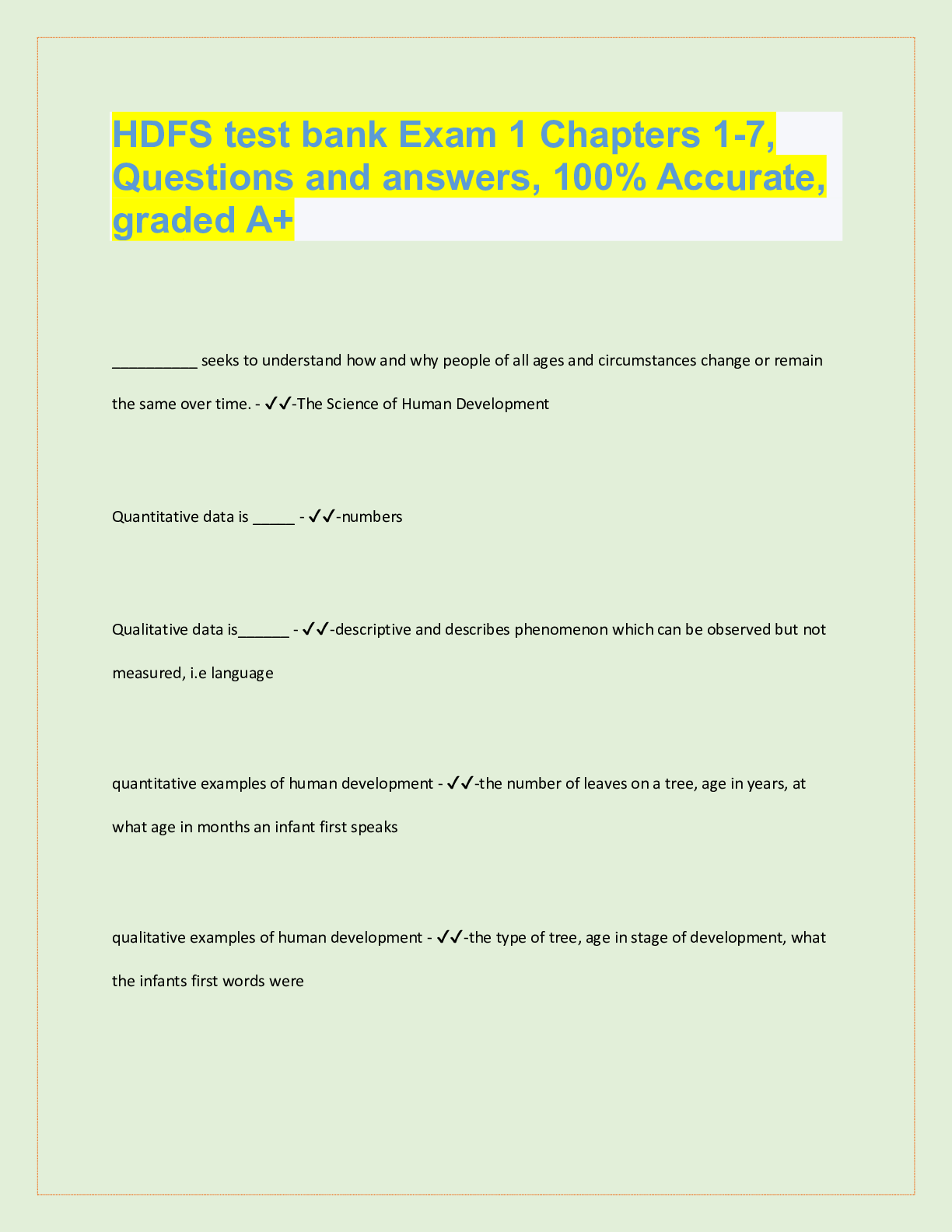
Buy this document to get the full access instantly
Instant Download Access after purchase
Buy NowInstant download
We Accept:

Reviews( 0 )
$12.00
Can't find what you want? Try our AI powered Search
Document information
Connected school, study & course
About the document
Uploaded On
Mar 14, 2023
Number of pages
48
Written in
Additional information
This document has been written for:
Uploaded
Mar 14, 2023
Downloads
0
Views
92













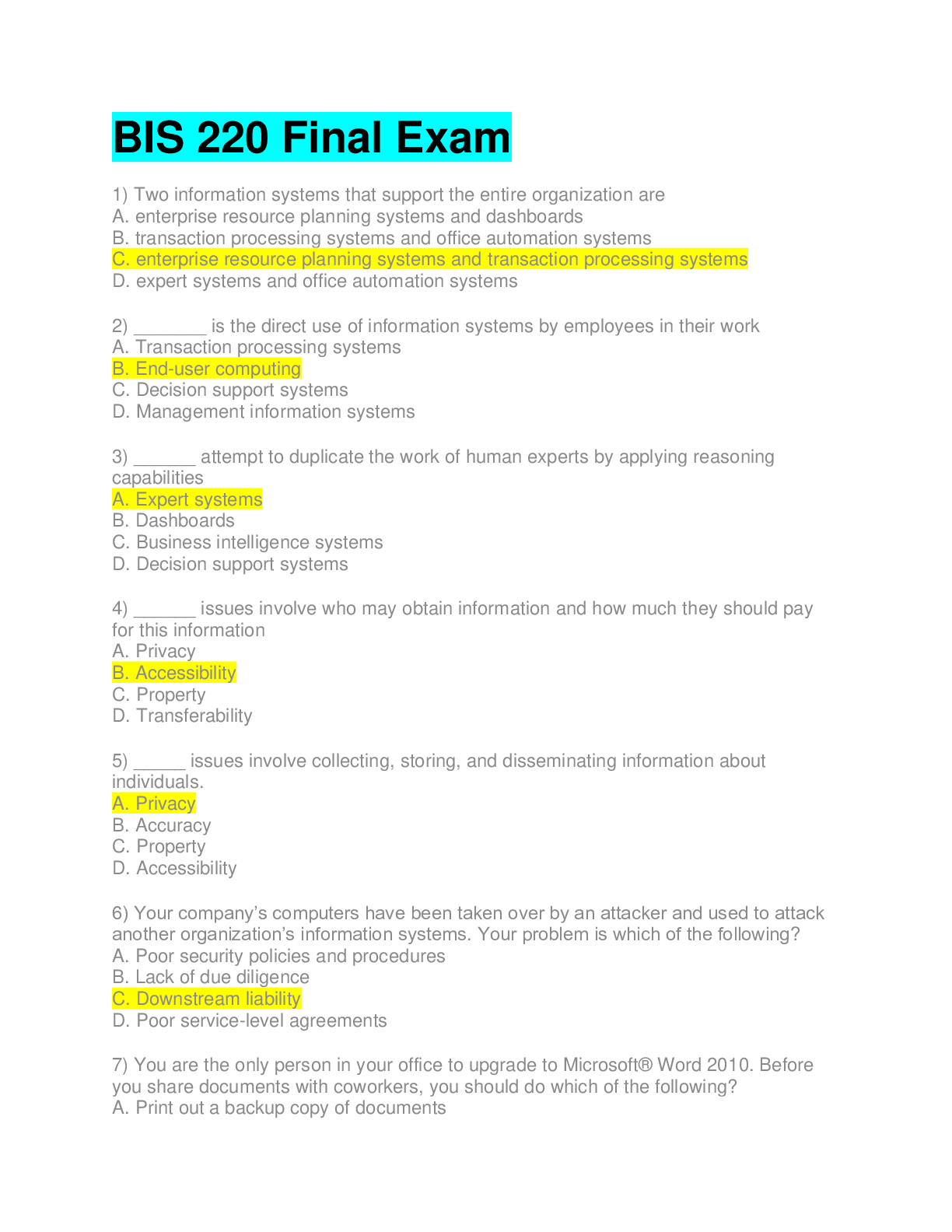
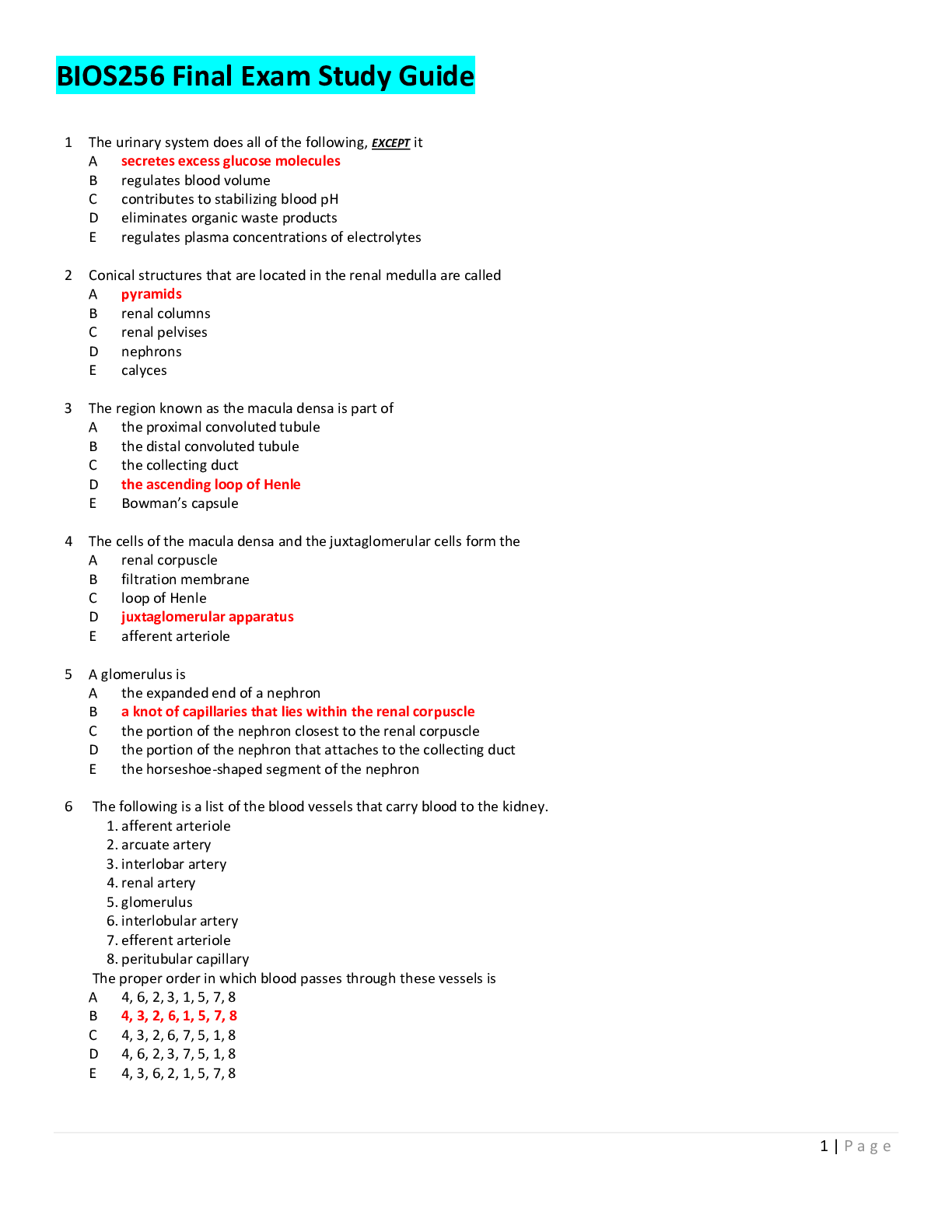
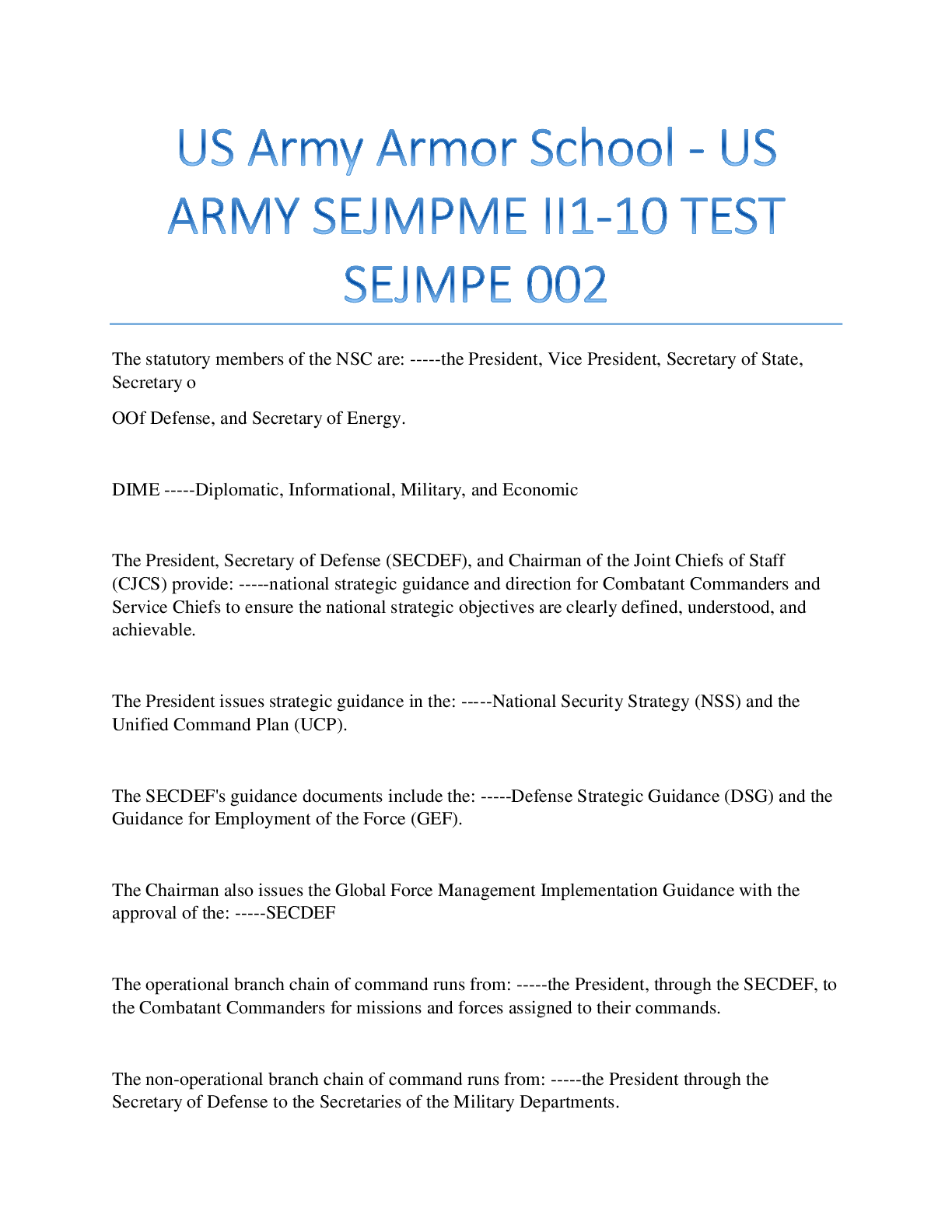

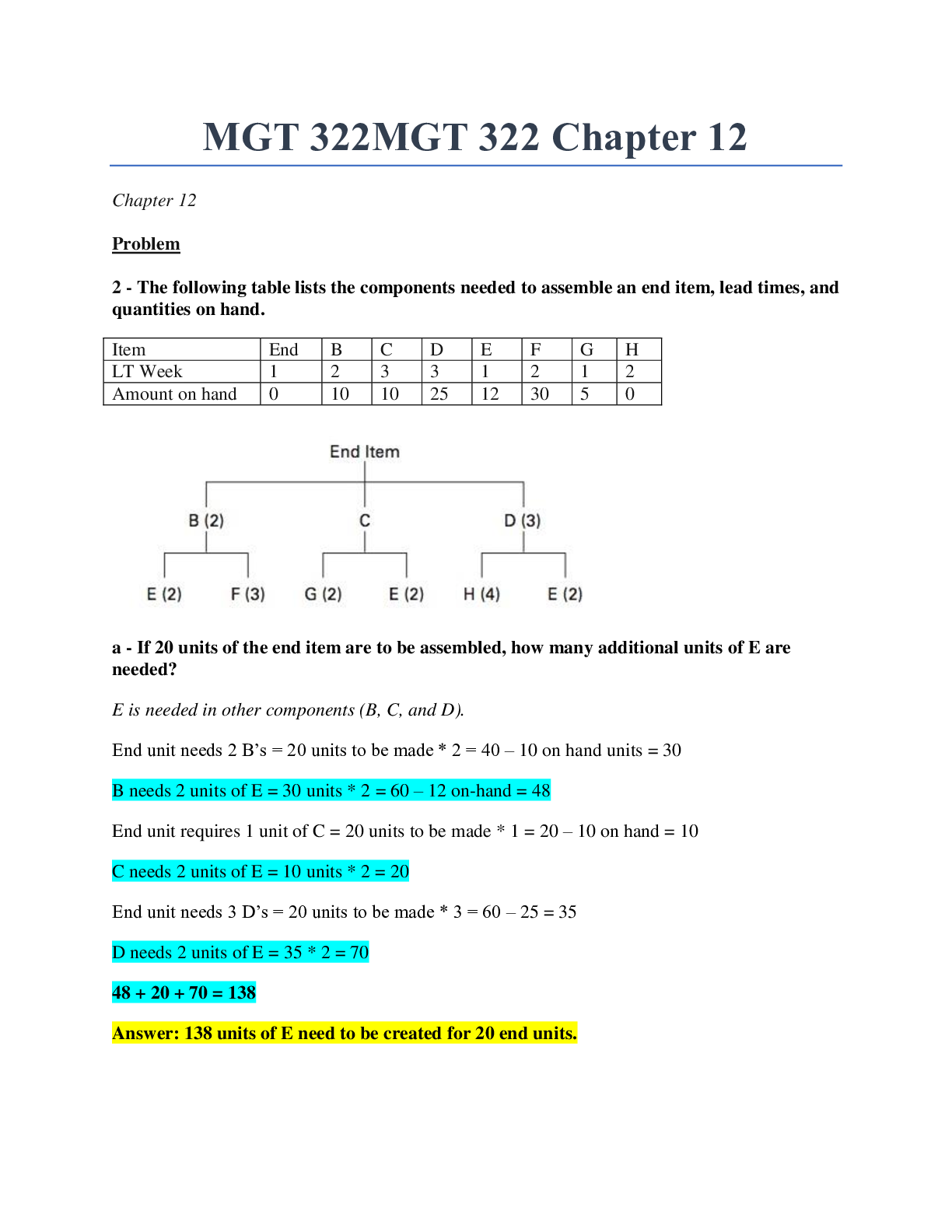
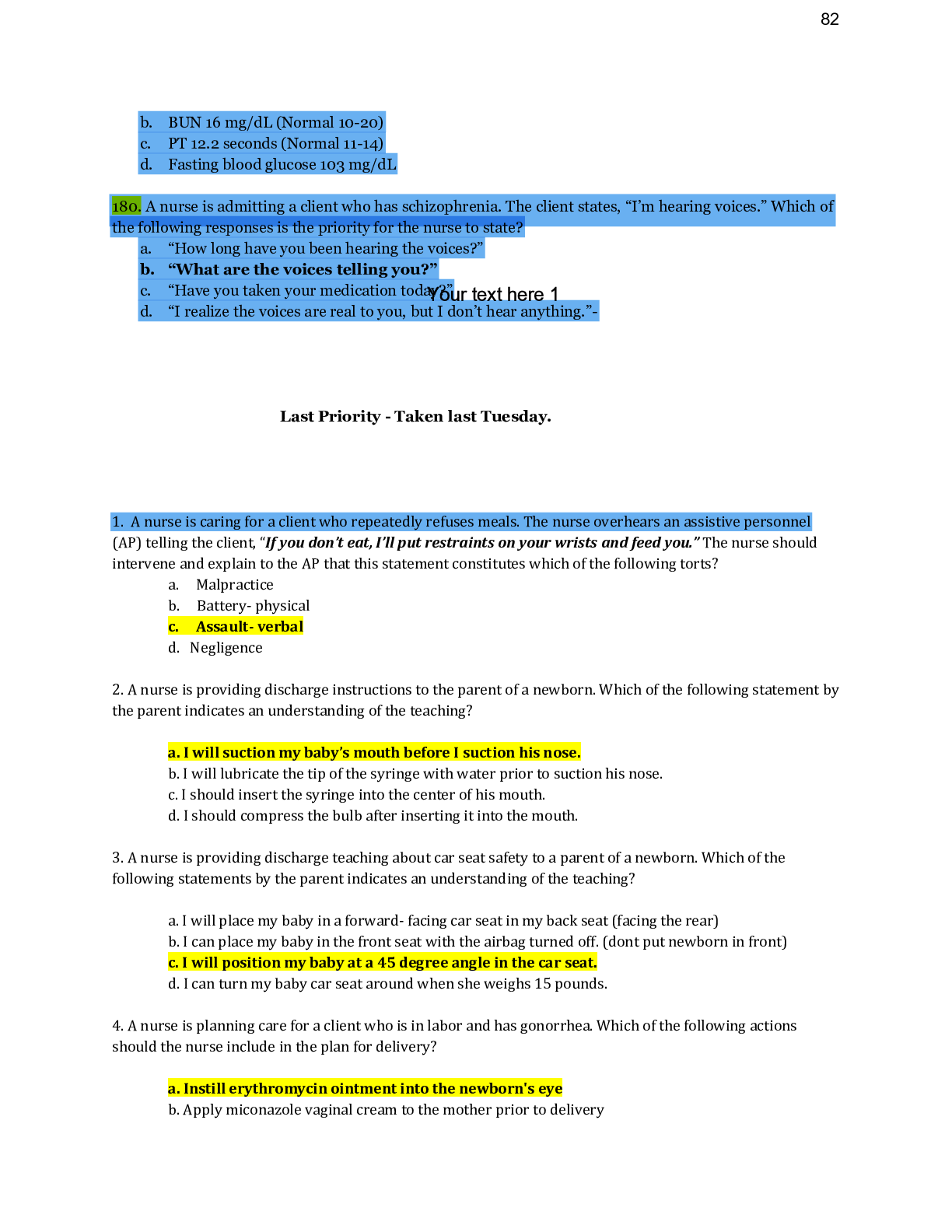
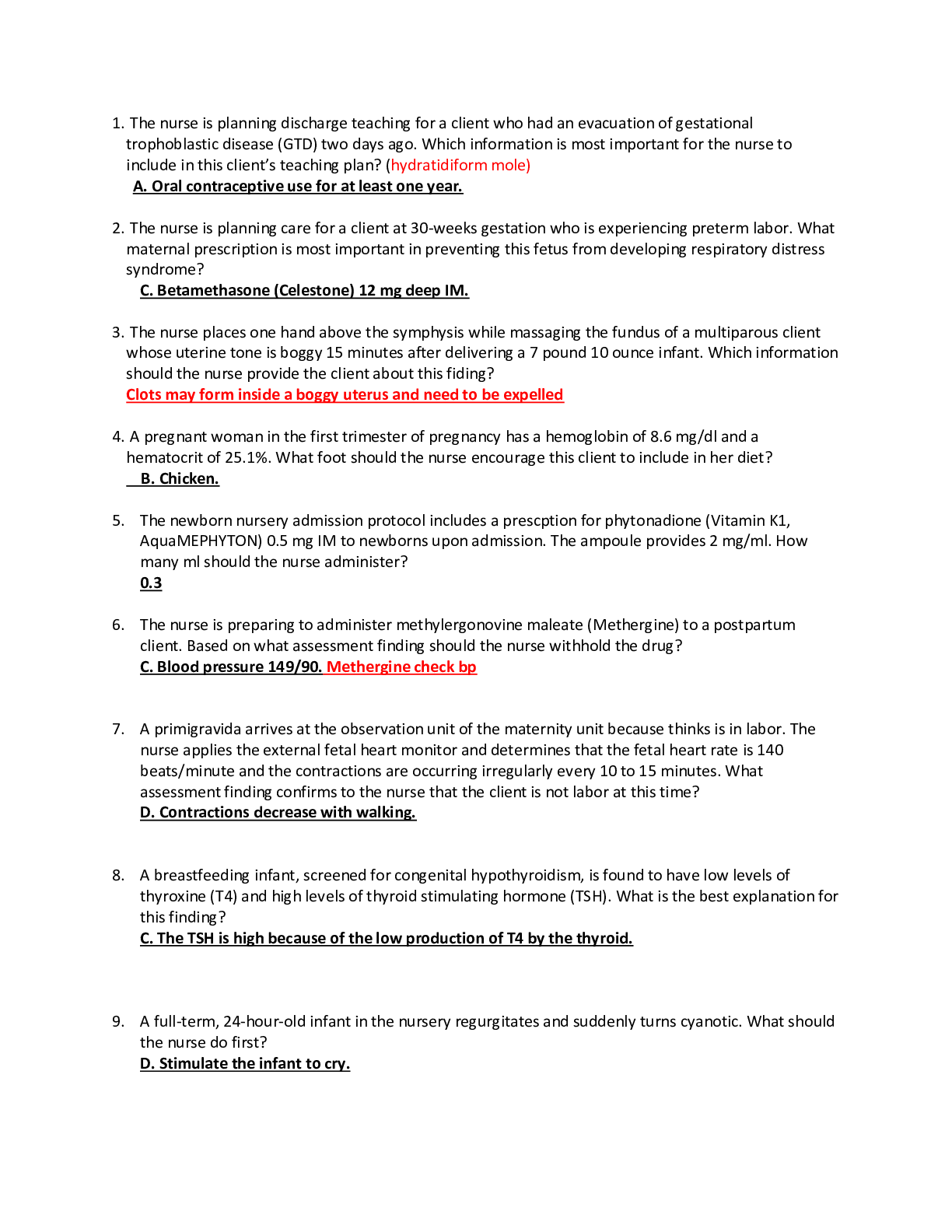

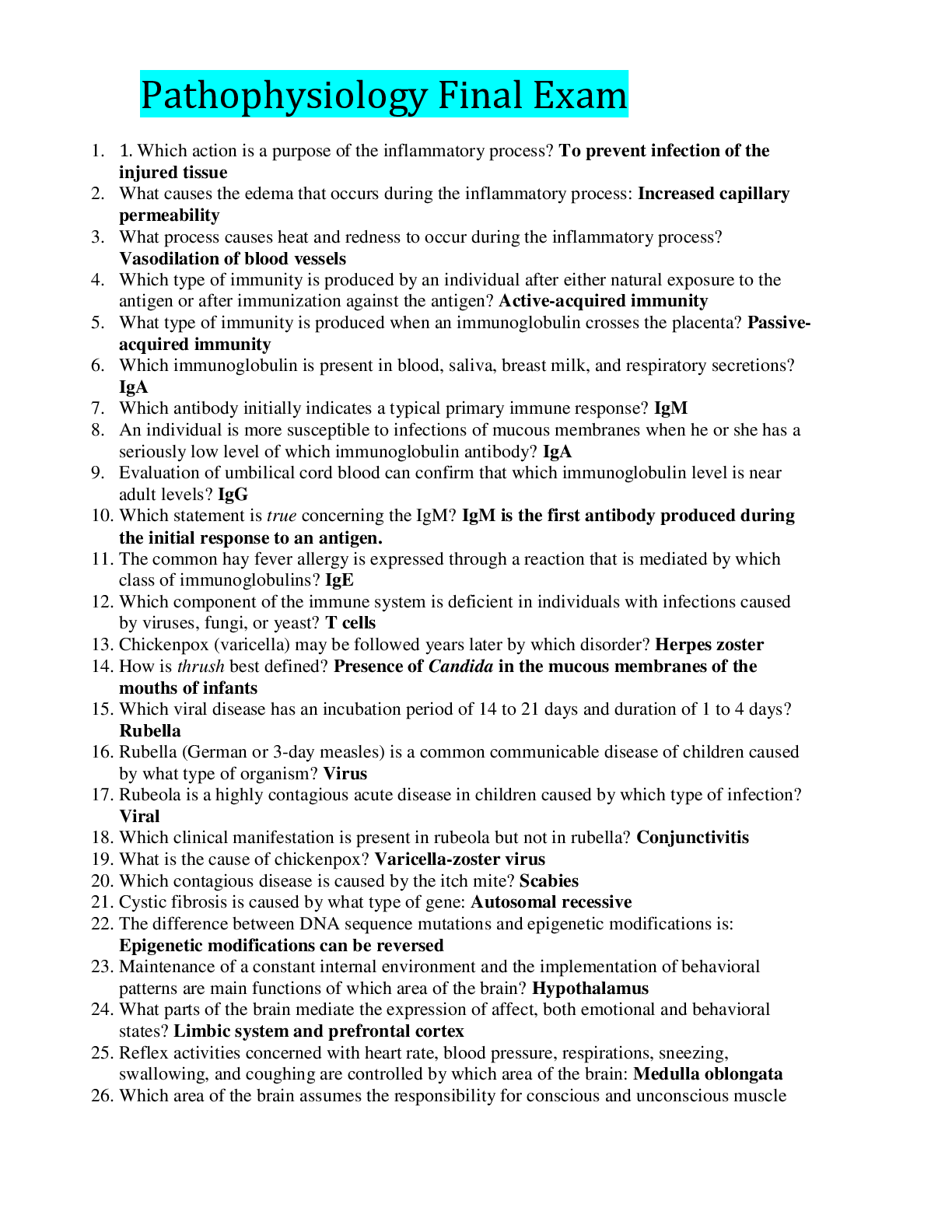
.png)



